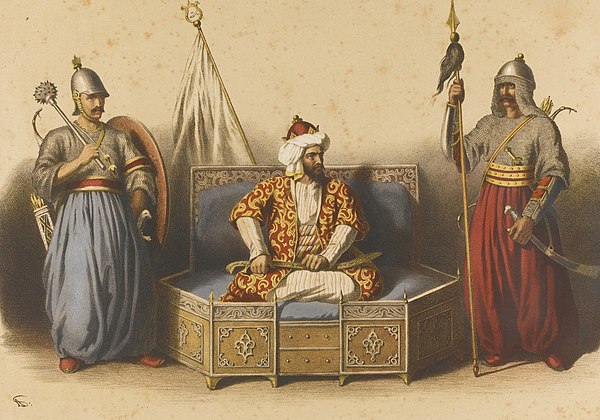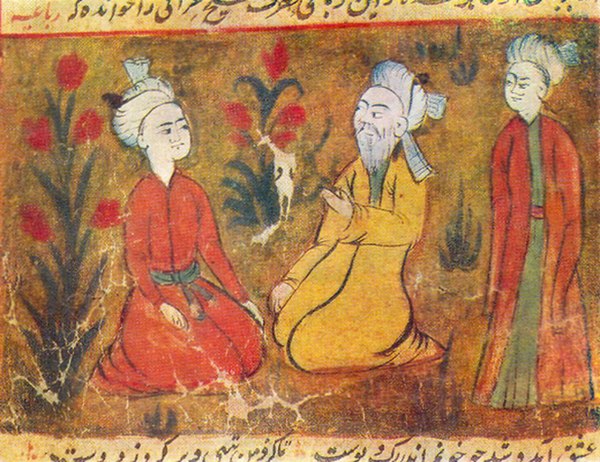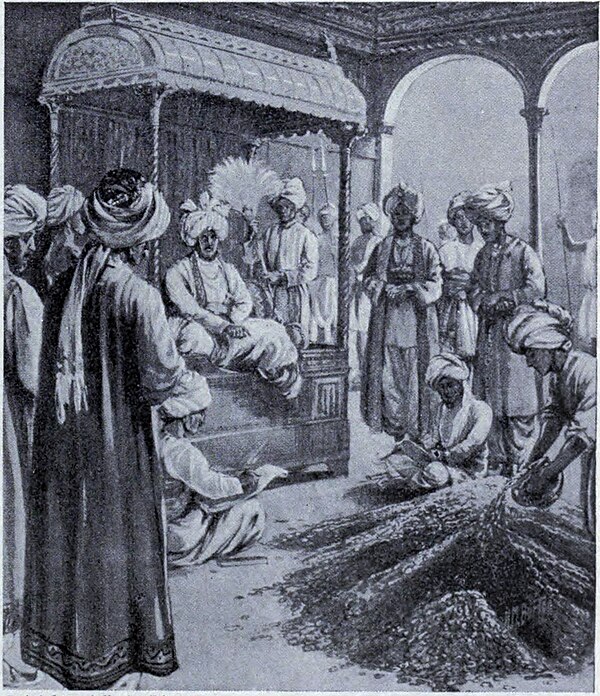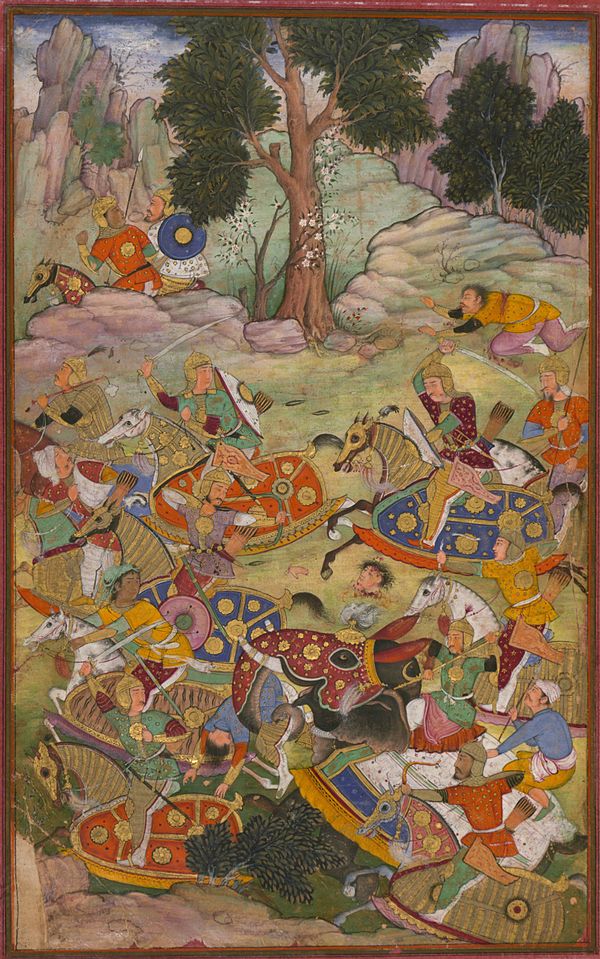
Delhi Sultanate
The Sultanate of Delhi also known as the Delhi Sultanate was an empire located in Delhi during the medieval period. It spanned across regions of the subcontinent for 320 years, from 1206 to 1526. After the Ghurid dynastys invasion of South Asia five successive dynasties ruled over the Delhi Sultanate; the Mamluk dynasty (1206–1290) Khalji dynasty (1290–1320) Tughlaq dynasty (1320–1414) Sayyid dynasty (1414–1451) and Lodi dynasty (1451–1526). The empire controlled territories in present day India, Pakistan, Bangladesh and parts of Nepal.
Muhammad Ghori, a Ghurid conqueror who defeated the Rajput Confederacy led by Prithviraj Chauhan near Tarain in 1192 after a setback established the foundation of the Sultanate. The Turkic slave generals of Muhammad Ghori such, as Taj al Din Yildiz, Qutb al Din Aibak, Bahauddin Tughril and Nasir ad Din Qabacha played roles in governing regions that were once part of the Ghurid territories. The Khalji and Tughlaq dynasties brought about an era marked by Muslim conquests advancing deep into South India.
The sultanate reached its peak in terms of territory during the Tughlaq dynasty, when Muhammad bin Tughluq ruled over most of the subcontinent. The region went through changes, in Northern India following Tamerlane's destructive attack on Delhi in 1398, which was then followed by the rise of rival Hindu powers like Vijayanagara and Mewar asserting their independence. Additionally new Muslim sultanates such as Bahmani Sultanates emerged. In 1526 Babur invaded India. Conquered the Sultanate paving the way for the rise of the Mughal Empire.
The establishment of the Sultanate further integrated the subcontinent into Islamic social and economic networks leading to developments such as Hindustani language and Indo Islamic architecture. The Sultanate successfully defended itself against Mongol attacks from the Chagatai Khanate. Even saw Razia Sultan become one of the female rulers in Islamic history reigning from 1236, to 1240.
The way they treated Hindus, Buddhists and other followers of beliefs was generally seen as negative. There were forced conversions and numerous instances of Hindu and Buddhist temples, universities and libraries being desecrated during the rule of the sultanate. The Mongolian invasions, in West and Central Asia led to a long term migration of soldiers, intellectuals, mystics, traders, artists and craftsmen from those areas, into the subcontinent contributing to the establishment of culture.













































